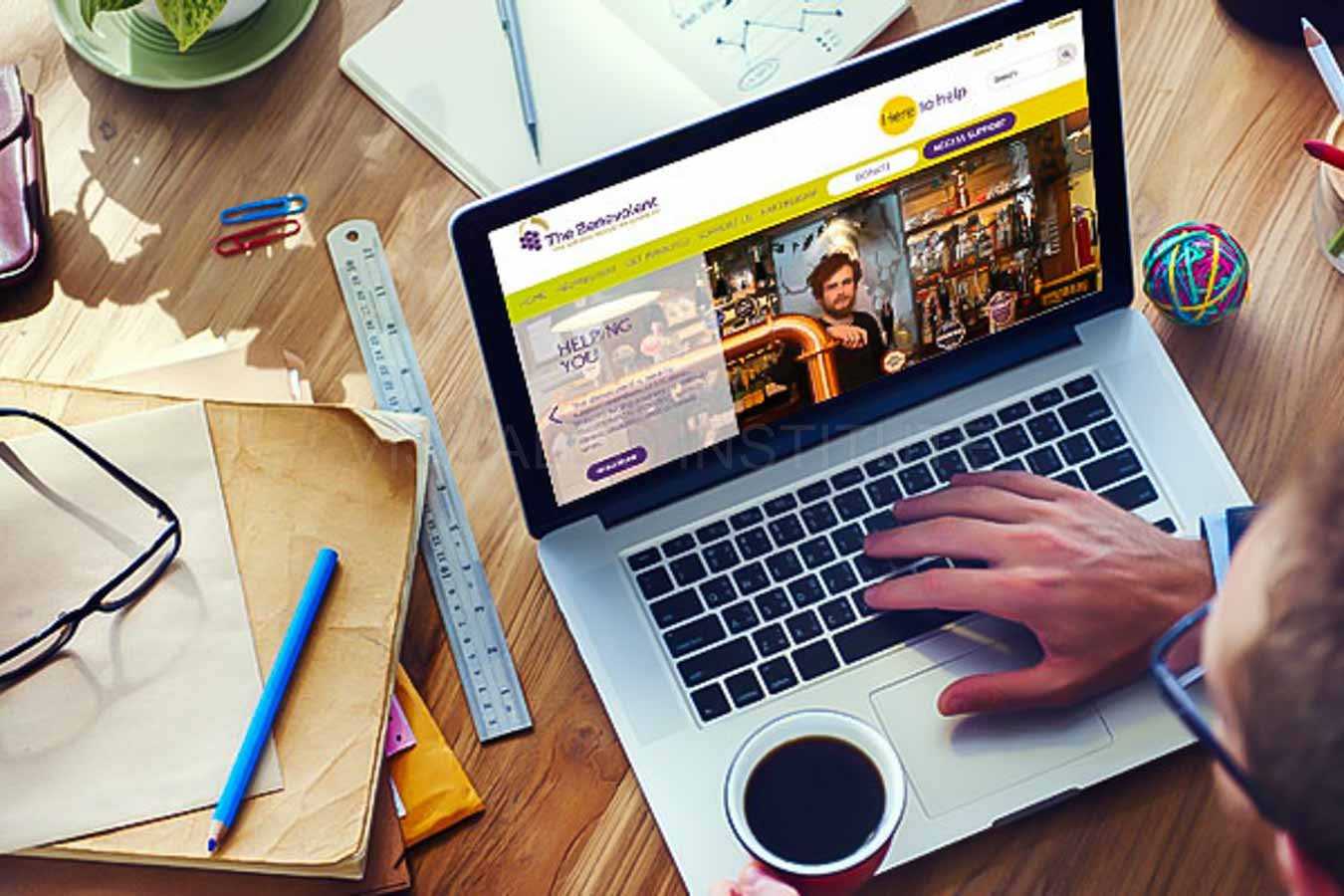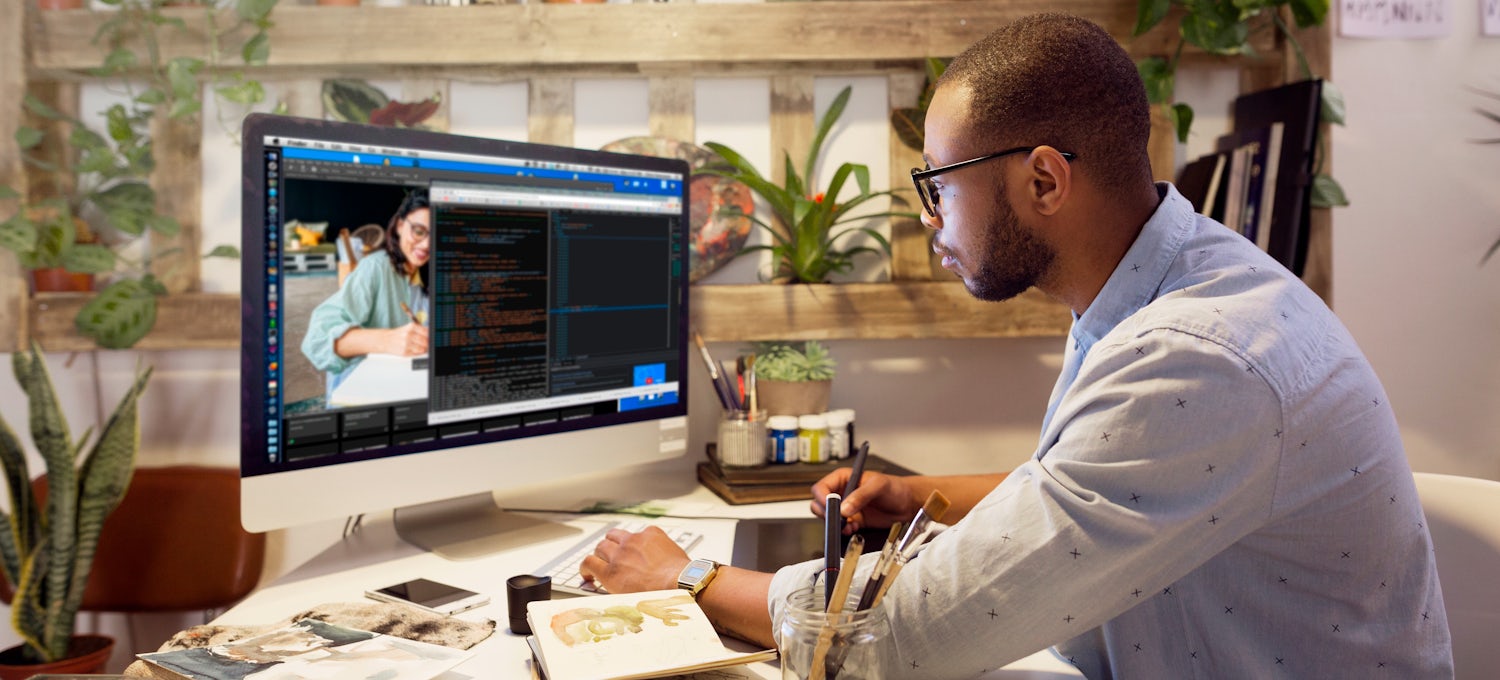How to Effectively Combine Aesthetic Appeals and Functionality in Website Design
When developing a web site, you require to strike an equilibrium in between aesthetic appeals and performance. It's not nearly looking great; your design must likewise serve a purpose and overview individuals efficiently. By concentrating on simplicity and user-friendly navigating, you can create an appealing experience. However what components genuinely improve functionality while maintaining visual allure? Let's discover the essential principles that can bring about an unified mix of appeal and feature.
Comprehending the Relevance of Aesthetic Appeals and Functionality
When you develop a website, comprehending the balance between aesthetics and performance is necessary for producing an efficient individual experience. An aesthetically enticing website grabs interest, yet it's the capability that keeps individuals engaged. If your site looks fantastic however is challenging to navigate, site visitors will swiftly weary and leave.Consider your target audience and what attracts them in. You desire to develop a style that mirrors your brand while making certain simplicity of use. Streamlined formats, instinctive navigation, and clear telephone calls to action can boost both visual appeals and performance.

Concepts of Effective Web Design
To develop a reliable website design, you need to follow a number of essential principles that enhance both user experience and visual appeal. First, focus on simpleness; a tidy design aids customers browse conveniently. Utilize a regular color design and typography to preserve comprehensibility throughout your website. This promotes knowledge and trust.Next, assure your layout is responsive. Individuals gain access to websites on different tools, so your style ought to adjust perfectly. Focus on aesthetic power structure; highlight important components with shade, dimension, or positioning to direct customers' focus.Finally, integrate adequate white area. It avoids clutter and makes content more absorbable. Remember, reliable internet design balances aesthetics and functionality, so every style choice must serve an objective. By complying with these concepts, you'll develop a site that's not just visually enticing but likewise easy to use, inevitably keeping site visitors engaged and motivating them to return.
Prioritizing User Experience
When focusing on user experience, you'll wish to start by understanding what your individuals genuinely need. Streamlining navigating design can make a significant distinction in how easily they find what they're searching for. Additionally, enhancing visual hierarchy aids assist their focus to one of the most crucial aspects on your site.
Recognizing User Requirements
Comprehending user needs is essential for developing an engaging internet experience that maintains visitors returning. To attain this, you must identify the goals and choices of your target audience. Begin by conducting individual research study, like meetings or studies, to gather understandings on what users worth most. Pay interest to their discomfort factors and obstacles when connecting with comparable web sites. This information enables you to customize your layout, making sure capability straightens with individual assumptions. Furthermore, think about creating customer personalities that represent various sectors of your audience, helping you envision their requirements during the layout procedure. When you prioritize recognizing individual needs, you develop a web site that not only looks fantastic but also provides a smooth, satisfying experience that promotes commitment.
Streamlining Navigating Design

Enhancing Aesthetic Pecking Order
A solid visual power structure is essential in guiding customers through your site and ensuring they involve with vital content. To achieve this, utilize color, spacing, and dimension tactically. Make vital components like headings larger and bolder than body text, attracting interest quickly. Use contrasting shades to highlight contact us to action, encouraging clicks. Additionally, utilize adequate white room to separate sections, making material digestible and inviting.Consider the flow of info; organize elements logically, leading users' eyes from one indicate the next. Use aesthetic signs, like arrowheads or lines, to direct focus. By prioritizing aesthetic pecking order, you enhance customer experience and increase the probability of conversions, ensuring your internet site is both visually pleasing and functionally efficient.
Shade Theory and Its Effect On Usability
While choosing the best colors for your web site might seem like a minor detail, it greatly influences use and individual experience. Color impacts exactly how customers perceive details and can enhance or hinder navigating. Contrasting shades can aid vital elements stand out, making it much easier for site visitors to find what they need.Additionally, think about the psychology of shades: blue often influences trust, while red creates necessity. Recognizing your target market can guide your shade choices, guaranteeing they reverberate well.Moreover, constant color pattern help construct brand identification, making your website more memorable. Be careful-- also more info lots of colors can overwhelm individuals. Stay with a restricted scheme that enhances your content and preserves clarity.Incorporating availability is additionally crucial; validate your shade combinations get along for those with aesthetic disabilities. By attentively applying shade theory, you'll improve usability and create an extra appealing individual experience.
Typography: Balancing Style and Readability
Shade options set the phase for your web site, but typography plays an equally necessary role in boosting user experience. You want your message to interact clearly while also mirroring your brand's personality. Beginning by picking fonts that are not just attractive however likewise readable. Sans-serif font styles often function well for electronic displays, as they're simpler to review at different sizes.Maintain a pecking order by utilizing various typeface sizes and weights; this overviews users through your web content effortlessly. Think about line spacing and letter spacing; as well limited can discourage readers, while also loose can interrupt the circulation. Limitation your typeface options to two or three to keep the layout cohesive.Finally, always evaluate your typography throughout different gadgets and internet browsers. What looks good on one screen might out one more. Balancing design with readability warranties that your message reverberates, keeping your target market informed and involved.
Responsive Layout: Making Looks Work on All Instruments
To guarantee your website looks great on any kind of device, you'll need to embrace receptive design concepts. This technique assurances your site adapts to different screen sizes, offering a perfect customer experience. Begin by making use of fluid grids and adaptable pictures that scale perfectly. Rather than fixed measurements, select portions and family member devices, enabling your format to change dynamically.Next, execute media queries in your CSS. These let you use different designs based upon tool features, like screen width. In this manner, you can keep visual appeal while guaranteeing functionality.Don' t forget touch targets; ensure switches and web links are easy to tap on smaller screens. Focus on necessary web content, so customers can easily browse your website no matter their tool. By concentrating on these elements, you'll create an interesting, aesthetically appealing experience that meets the demands of all users, whether they get on a smart device, tablet computer, or desktop .
Carrying Out Usability Testing for Continuous Enhancement
To enhance your internet layout, you need to establish clear use objectives that align with customer requirements. By performing individual examinations, you can collect valuable comments on exactly how actual individuals connect with your site. Evaluating these outcomes will certainly aid you make educated renovations and create an extra efficient customer experience.
Specifying Functionality Goals
While visual appeals can draw individuals in, defining usability objectives is crucial for ensuring their experience remains smooth and gratifying. Start by determining what you want individuals to accomplish on your site (website design london Ontario). Consider their habits, demands, and tasks. Are they seeking information, purchasing, or registering for a newsletter? Develop clear criteria to gauge success, like job completion prices or time on job. Prioritize intuitive navigation, available content, and receptive layout to enhance functionality. Frequently revisit these goals as user assumptions advance. By defining use goals, you develop a structure for examining and enhancing your web site's performance. This focus on use not just boosts individual complete satisfaction however likewise enhances the total performance of your design
Carrying Out Customer Examinations
Performing user examinations is important for fine-tuning your site and guaranteeing it meets your target market's needs. Begin by recognizing your target users and developing an examination strategy that describes your objectives. Use a mix of qualitative and measurable approaches, such as surveys, interviews, and task-based monitorings, to gather thorough comments. Invite individuals to browse your website while you observe their communications and keep in mind any kind of problems they come across. Motivate open discussion to capture their thoughts and feelings concerning the design and capability. Keep sessions short and focused, ensuring you cover essential locations without frustrating individuals. Make sure to document all findings, as this info will certainly be invaluable for making educated design choices that boost both aesthetics and use.
Examining Examination Results
How can you effectively examine the results of your functionality tests to drive continuous renovation? Begin by classifying comments into usual motifs. Look for patterns in customer behavior that highlight pain points or areas for improvement. Use measurable data, like job conclusion prices and time on job, to determine functionality objectively. Don't forget to think about qualitative insights from user remarks; they typically expose underlying problems that numbers can't reveal. Prioritize one of the most impactful searchings for and produce workable things for your layout group. Remember, it has to do with repeating-- apply modifications, then test again. This cycle of screening, evaluating, and refining assists you equilibrium aesthetics and functionality, ensuring your site fulfills customer demands successfully while preserving aesthetic charm.
Often Asked Concerns
Exactly how Do I Choose the Right Color Palette for My Site?
To pick the ideal color combination for your web site, consider your brand name's individuality, target audience, and emotional influence (website design london Ontario). Usage shade psychology, produce consistency, and warranty readability. Examination mixes to see what resonates finest with site visitors
What Tools Can Assist With Website Design Appearances and Performance?
You can use devices like Adobe XD, Figma, and Sketch to boost your web style's aesthetic appeals and performance. These systems provide user-friendly interfaces, cooperation functions, and pre-made templates to enhance your innovative process and improve your styles.
Just How Can I Include Animations Without Jeopardizing Performance?
To include computer animations without endangering functionality, prioritize subtle effects that enhance individual experience. Usage CSS animations for smoother interactions, guarantee quick tons times, and examination on numerous gadgets to maintain efficiency while including visual allure.
What Are Usual Blunders to Avoid in Website Design Aesthetics?
When designing, avoid cluttered layouts, bad shade choices, and inconsistent fonts. Do not forget mobile responsiveness, as it can push away individuals. Confirm your design aligns with your brand, developing a smooth experience that engages visitors successfully.
Just how Usually Should I Update My Web site's Design for Optimal Visual Appeals?
You need to update your internet site's layout every 1-2 years to stay on top of fads and maintain excellent looks. Regularly restoring visuals aids involve site visitors and warranties your website continues to be straightforward and attractive. When you design a web site, comprehending the balance in between appearances and functionality is necessary for creating an efficient individual experience. To produce an efficient internet style, you need to stick to numerous key concepts that enhance both user experience and visual charm. Users accessibility web sites on various devices, so your style ought to adjust perfectly. When prioritizing user experience, you'll desire to begin by comprehending what your individuals truly require. Begin by carrying out user research, like studies or meetings, to collect understandings on what individuals value most.